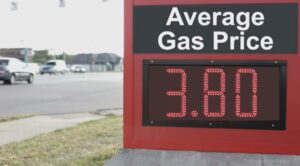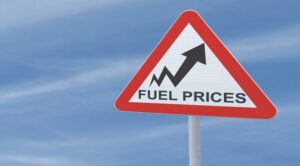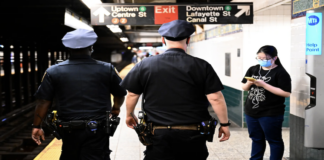Gas prices in the United States continue to increase, causing drivers more headaches at the pumps.
According to the motor club AAA, gas prices in the United States averaged $3.78 per gallon on February 28th. This is about 25 cents more than they were a month earlier. Experts say that while today’s gas prices are still lower than last year’s, they are unusually high. Energy costs spiked in the months after Russia invaded Ukraine and pushed up the price of gasoline worldwide.
The AAA spokesperson Andrew Gross said that it usually takes a hurricane for prices to rise by this much. Gross said the increase is particularly interesting because “fewer people” are filling up their cars than in years past.

The U.S. gasoline price is highly dependent on crude. West Texas Intermediate crude oil, the U.S. benchmark price, has been above $80 per barrel since Thursday. It was over $81 on Tuesday afternoon. Tom Kloza, global head of OPIS’ energy analysis, said that this marks a $12 increase since July 3.
Gross and Kloza point out that there are several factors that cause oil prices to increase, such as global production cuts, and the impact of extreme heat this summer on refineries. What you need to be aware of
Gas Prices Are Rising Because Of The Heat And Production Cuts
Gas prices are rising partly because of the record-breaking temperatures this summer.
Gross said that while the heat is keeping people at home, it also prevents refineries from producing refined products. Refineries are designed to run between 32-95 degrees Fahrenheit (0-35 degrees Celsius). They don’t like extreme temperatures because they are dangerous. So, they reduce production to ensure safety. But this then limits supply.
Kloza estimates that the Gulf Coast has a refining capacity of about 10 million barrels per day. He said that the heat wave caused refineries to run below their normal capacity, which resulted in hundreds of thousands of barrels being lost each day.

He said that despite the fact that “some refineries are struggling, those that are still able to run are making very nice profits.” The U.S. is currently consuming about 9 million barrels of gasoline per day. This is about half a million less than what was expected during the summer peak months. However, the country exports a large amount of gasoline.
Kloza emphasized that the OPEC+ coalition has been cutting crude oil production from its major producers. Saudi Arabia, for instance, began reducing the amount of oil it sent to the global market by one million barrels per day in July. He said that Russia also exports less.
Gross pointed out that the cuts were not OPEC-wide. Gross suspects that as inflation falls, better economic prospects are also putting pressure worldwide on oil.
What States Have The Highest Gas Prices Today?
Gas prices are higher in certain areas of the U.S. than they are elsewhere. This is due to a variety of factors, including routine maintenance at refineries and limited supplies in certain states.

According to AAA, California’s gas prices were the highest in the country on Tuesday at $5.01 per gallon. Washington and Oregon were next at $4.96 each.
Mississippi was the state with the lowest average price at $3.29, followed by Louisiana ($3.39) and Alabama ($3.40).
Will Gas Prices Continue To Rise?
Experts say it’s difficult to predict what the gas price will be in the next few weeks.
Both Gross and Kloza warned of the risk of hurricanes, which would, of course, cause refineries to shut down.

If you could guarantee that we wouldn’t have hurricane or tropical storm winds in the Gulf of Mexico for the remainder of the year, I would say that it will be smooth sailing. Kloza pointed out that the recent unprecedented temperatures in the Gulf of Mexico were a “fly in the ointment”.
How Can I Save Gas?
There are several ways to maximize your miles per gallon if you want to save money or reduce the number of trips to the gas station.
Gross says that checking your tire pressure is an important habit. Low tire pressure can be dangerous and also cost you money in the long run.
AAA has additional tips for saving gas, including using cruise control whenever possible, not filling up your tank too high at the pump, and removing unnecessary items from your trunk.










